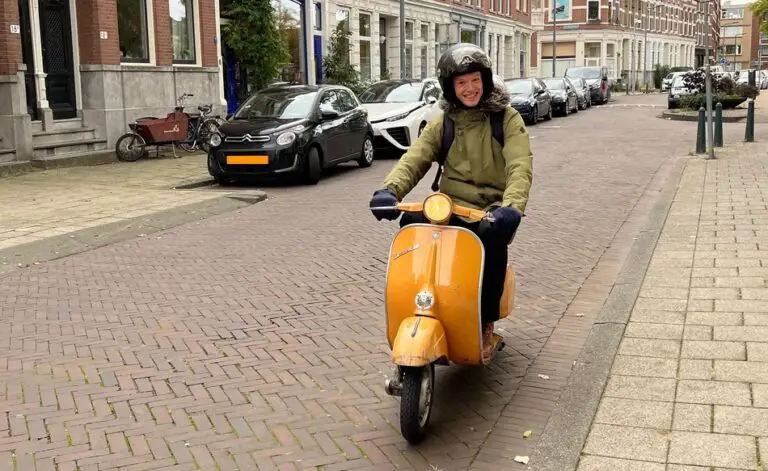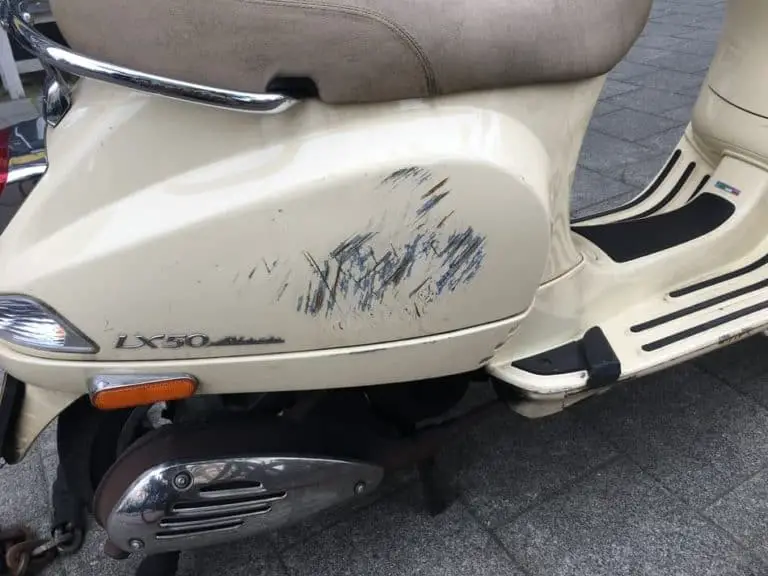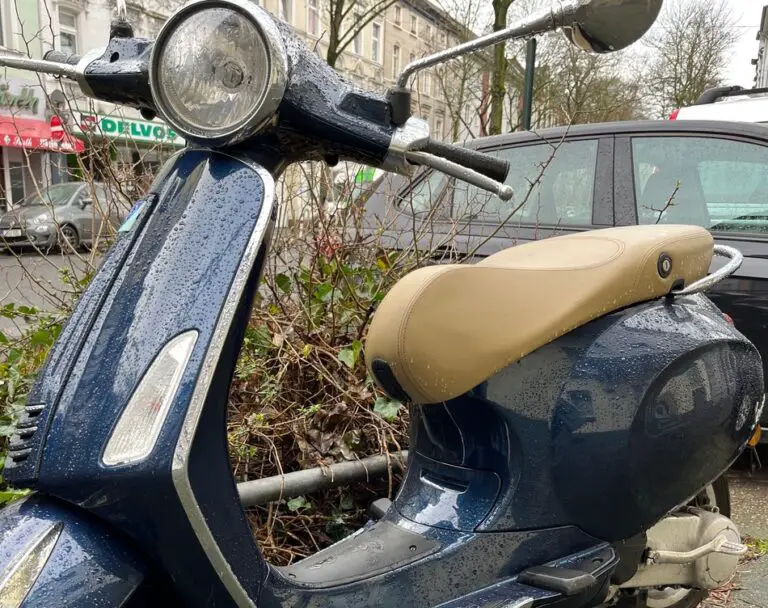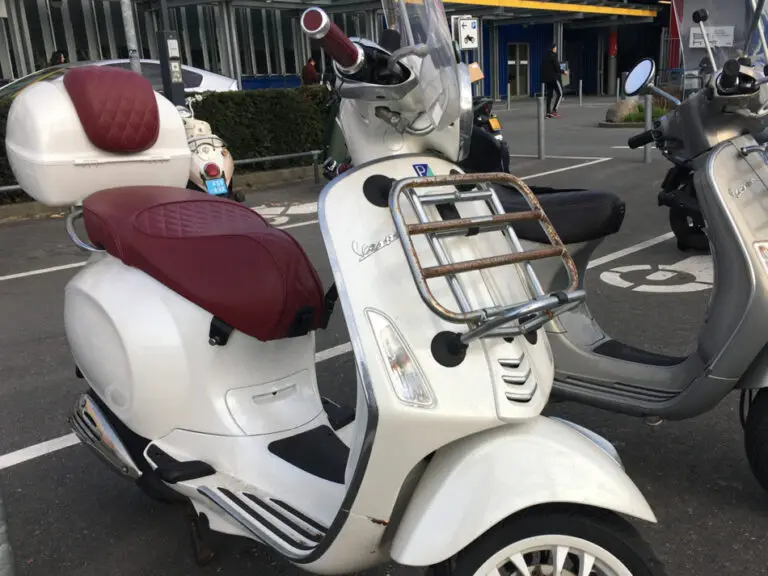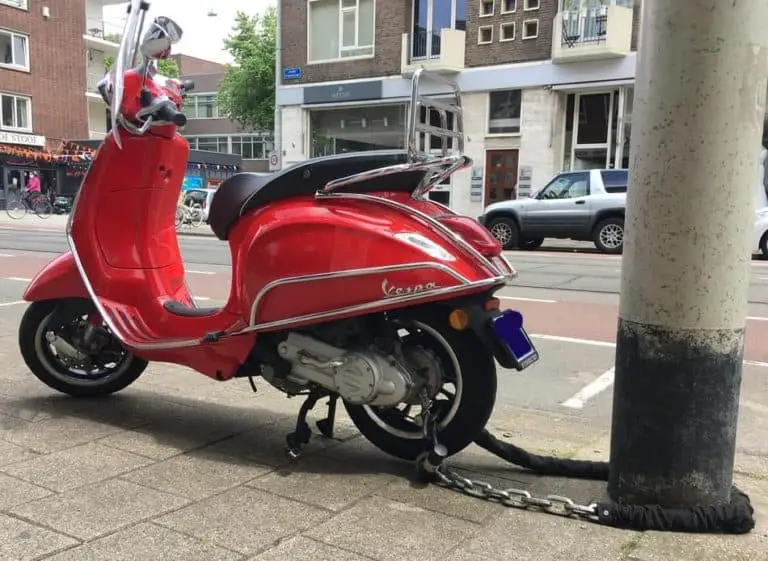What Is The Weight Limit For A Vespa? (for classic and modern)
When thinking about buying a Vespa or bringing your friend on your beloved scooter you might ask yourself if the Vespa can actually handle all the weight. The last thing you want is to cause any damage.
So what is exactly the weight limit for a Vespa? The weight limit for a Vespa is between 650 lbs(295 kg) and 749 lbs (340kg) depending on the model. The Vespas with 50cc engines can hold less weight compared to the Vespas with 278cc engines. The weight limit also includes accessories and passengers.
Let’s have a closer look at the weight limit and how this could affect your Vespa and driving experience. There might be some things you have never thought of but could be handy to know.
What is the weight limit for most of the popular Vespas?
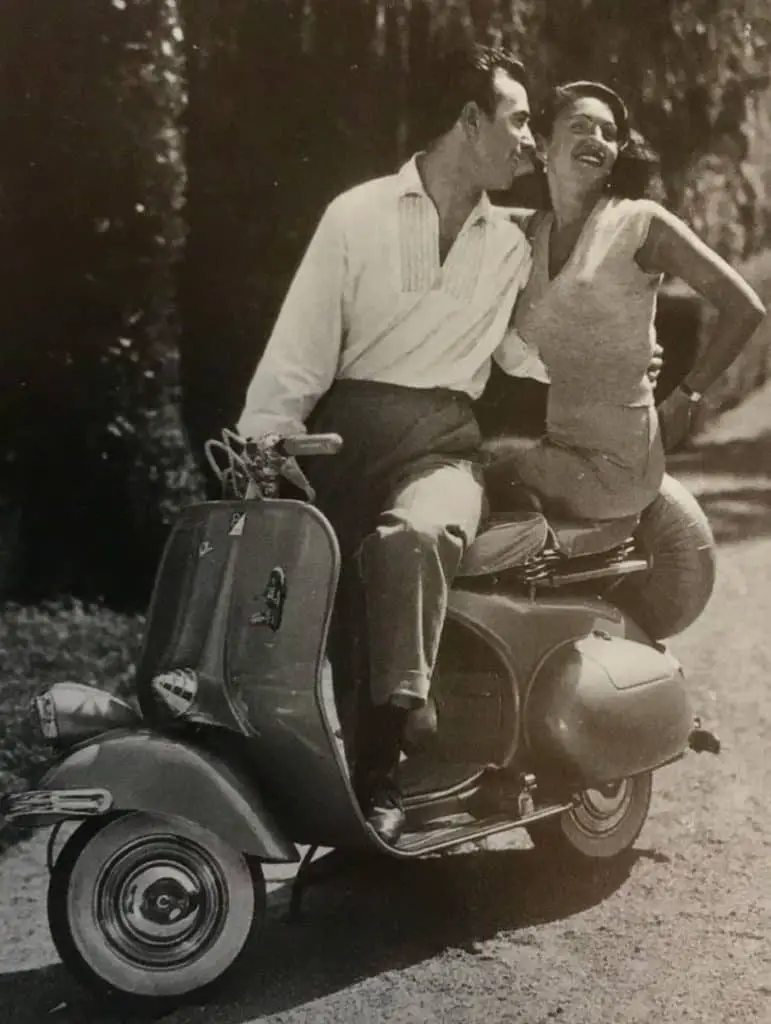
When talking about the weight limit of a Vespa we are talking about the gross vehicle weight (GVWR) which also includes passengers and cargo. In the following table, you can find the weight limit for the most popular Vespas in the history of Piaggio. For the early models, there are no data available but from 2005 we have found the maximum weight limit.
| Type | Weight Limit |
| Vespa 150 (1957) | 2 persons, and 22lbs/10 kg luggage, weigh limit unknown |
| Vespa V50 (1963) | 2 person, and 22lbs/10 kg luggage, weight limit unknown |
| Vespa 90SS (1965) | 2 persons, and 22lbs/10 kg luggage, weigh limit unknown |
| Vespa 125 (1948) | 2 persons, and 22lbs/10 kg luggage, weigh limit unknown |
| Vespa Rally 180/200 (1968) | 2 persons, and 22lbs/10 kg luggage, weigh limit unknown |
| Vespa 50/125 PK (1982) | 2 persons, and 22lbs/ 10 kg luggage, weigh limit unknown |
| Vespa PX 125/150/200 (1985) | 2 persons, and 22lbs/10 kg luggage, weigh limit unknown |
| Vespa 50 ET (1997) | driver only, weight limit unknown |
| Vespa 50 LX (2005) | 645.9 lbs/293 kg |
| Vespa 125/150 ET (1996) | 2 persons, and 22lbs/10 kg luggage, weigh limit unknown |
| Vespa 125/150 LX (2005) | 582 lbs/264 kg |
| Vespa 150 PX Catalyzed (2000) | 2 persons, and 9 lbs/ 4kg on each luggage rack, weigh limit unknown |
| Vespa 125/200/250/300 GT (2005) | 749.5 lbs/340 kg |
| Vespa Primavera/Sprint 50 (2014) | 650.3 lbs/295 kg |
| Vespa Primavera/Sprint 150 (2014) | 672.4 lbs/ 305 kg |
| Vespa 946 (2013) | 749.5 lbs/340 kg |
The maximum a classic Vespa can handle is ‘2 persons and 22 lbs/10 kg’. So what exactly does that mean? I guess we just have to use our common sense on that one. Just realize that these Vespas were built in Italy around 50 to 60 years ago. Then picture the size and weight of the average Italian back then. Bet you can figure out how much weight these Vespas can handle.
Why is sticking to the weight limit of a Vespa important?

The more weight a Vespa has to carry, the more the engine needs to work to reach the desired speed. Besides the engine, a heavy load will put more strain on other parts of the scooter to such as the rear suspension, the front forks, tires, the brakes, and the frame.
Understandably it is wise to keep to the recommended weight limit to avoid these parts wearing down more rapidly. Additionally, not only is the weight limit important for the lifespan of your Vespa but it is also important for safety reasons.
Driving with a heavy load is different than driving alone. There will be changes in the performance of a Vespa when the weight on the scooter increases such as:
- the brakes, it will take longer to stop
- balance and handling will be more difficult
- decrease of acceleration (important to know when you want to overtake a vehicle)
- less comfortable to make turns
- fuel consumption will increase
The Vespa has a low center of gravity making it easier to handle when stopping and driving off. So when carrying a bunch of heavy stuff, it is best to put the weight in the center of the frame as much as possible. A Vespa is pretty ideal, considering you can put a heavy box, bags, and/or other stuff on the floorboard between the diver’s legs.
Placing the heavy load on the floorboard will ensure more stability when driving. It will also have a less negative impact on the brake performance, as the weight is more towards the front of the Vespa instead of the back.
If you need to place cargo on the back seat, make sure it isn’t too far back. This will affect the braking ability, the balance and will make driving your Vespa feel more shaky.
The correct tire pressure is also important when increasing the weight on a Vespa. Not only is that better for the rims but it will save you a bit of fuel as well.
What should you know when taking a passenger on a Vespa?
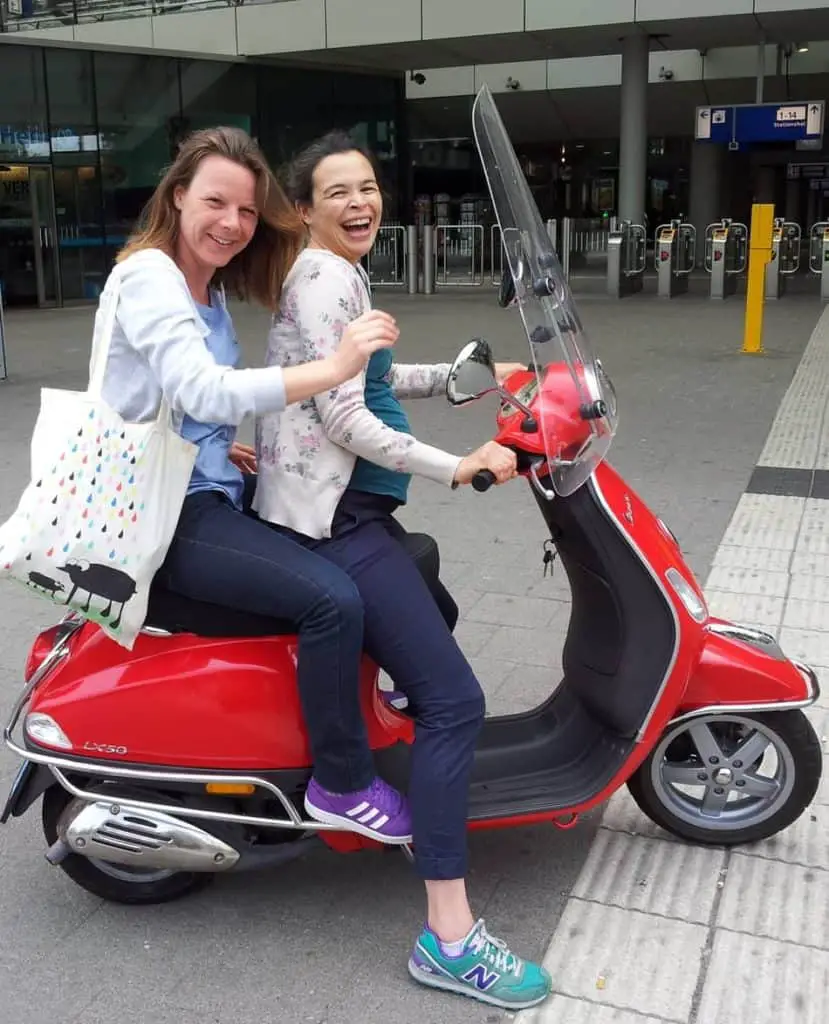
Having a passenger on the Vespa puts more strain on various parts of the scooter. You will also need to adjust your driving style.
Before you hit the road it is very important to check the weight limitation of your Vespa and the effect of carrying a heavy load (as mentioned above). Additional aspects you should know about carrying a passenger are:
Law and regulations on carrying a passenger on a motor scooter
In most states in the USA, a scooter must be equipped with footrests when bringing a passenger. In the district of Columbia, a passenger is only allowed when the seat is designed for two people. Besides the footrests, handgrips on the rear side of the Vespa are essential too. The drivinglaws websites provide more in-depth rules and regulations on carrying a passenger in certain states.
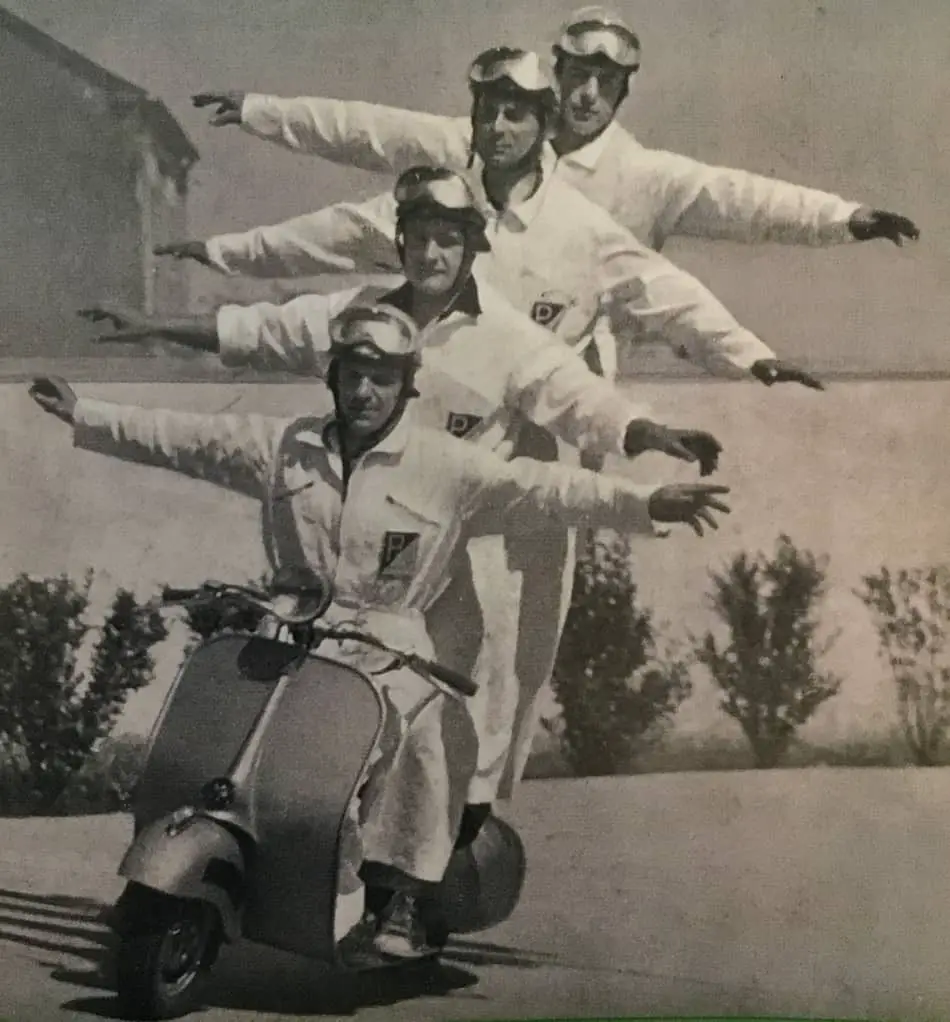
Correct tire pressure
When bringing a passenger have a look at the rear tire pressure. For instance, with the Vespa GTS 300, this should be set from 2.0 bar (only the driver) to 2.2 bar with a passenger. The front tire pressure can remain the same at 1.8 bar with or without a passenger.
Adjust shock absorbers
Furthermore, also check the shock absorbers if you want as comfortable as possible ride. You can set these to 4 positions:
Position 1: minimum preload; rider only
Position 2: medium preloading; rider only
Position 3: medium preloading; rider and passenger
Position 4: maximum preloading; rider, passenger, and luggage
The best is to ask for advice about this at your local motorcycle shop. You can let them adjust the shock absorbers for you or you can do it yourself using a special shock absorber wrench. While driving alone or with a passenger you should get a feel for the adjustment. Always set the front and rear shock absorbers to the same position for best steering precision.
Heavy Passengers
The heavier the passenger the more difficult it will be to handle your Vespa. Therefore you need to be aware that your driving style has to be adjusted. Driving with a passenger will take longer to slow down, turn and accelerate. Another crucial difference is that you need to apply the brakes sooner than usual. Make sure the brakes are in top-notch condition to break the heavier load.
To spread the weight it’s best to have the weight in the center of the Vespa to increase a low center of gravity. So if possible, it is better for the driver to be heavier than the passenger. However, if you are an experienced driver and lighter than the passenger then you should be able to handle the different driving conditions.
Weight is not only the factor you should consider when taking a passenger. You can read more on which models are suitable and how to bring children along in an article specifically on bringing a passenger along on a Vespa.
Can a brand new Vespa handle its maximum weight limit?
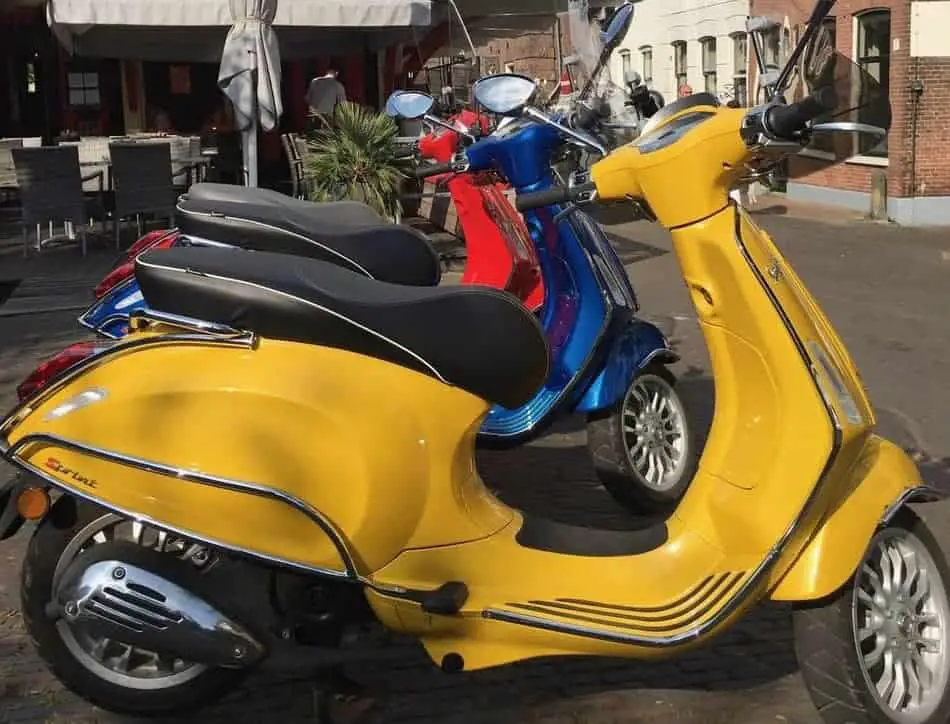
When you have just purchased your Vespa, you shouldn’t drive full speed. Generally speaking, you should at least prevent going full speed the first 1000 miles/1500km. During this period internal components of the engine such as valves, cylinder, and piston can break in gradually. The brake disc needs adjusting too. So when breaking in the engine, the brake’s reach is full brake capacity too.
Not only is the speed important for the proper break-in of your engine, but the load is just as crucial to prevent engine failure. Just like the speed of your Vespa, the load weight of a new Vespa should increase gradually in the beginning. Don’t strain your Vespa when it’s brand new.
If you immediately place a heavy load on a new Vespa it can damage the parts which will affect the performance of your engine, if not lead to engine failure. Once you have finalized breaking in the engine you can increase the load of a Vespa. Never exceed the recommended weight limit.
As we know by now, sticking to the recommended weight increases the performance of your Vespa and your own safety on the road.


